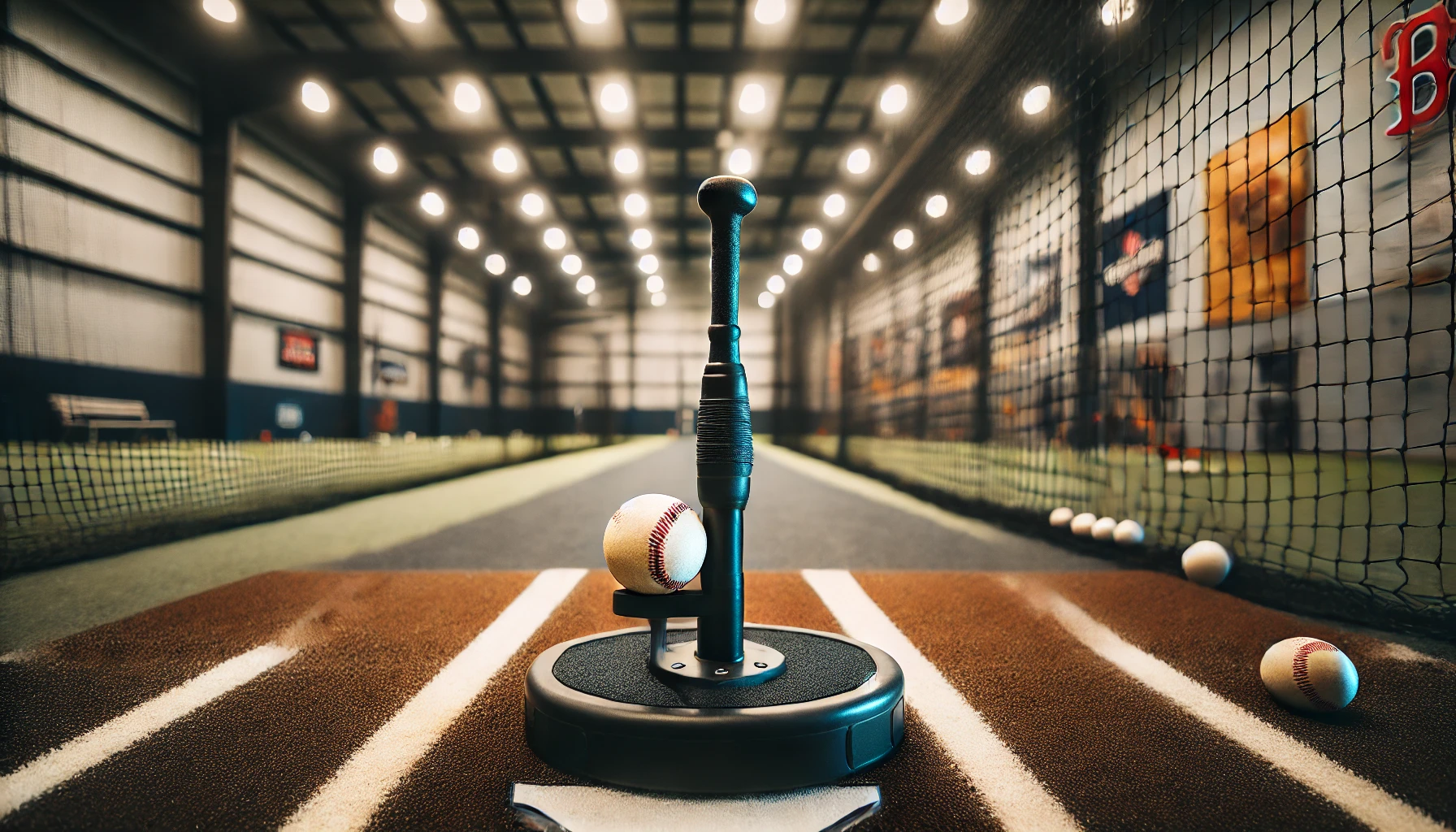
Tee Work 101: Elevating Your Batting Skills with a Simple Batting Tee
The simplest tools in baseball often prove the most indispensable, and few exemplify that better than the batting tee. Though you may have heard about or spent time reading tee work recommendations in various coaching manuals, the true value of a tee emerges only when you embrace it consistently and strategically. At first glance, a tee might appear better suited for beginners, but look into any professional training regimen and you’ll find that even the most advanced hitters dedicate time to perfecting their swing using this straightforward device.
The reason is clear: a batting tee not only reinforces core mechanics and muscle memory, but also fosters an environment where every swing can be methodically improved. By eliminating the variables of pitch speed and movement, you home in on the fine details of stance, load, hand position, and swing path.
A decade or two ago, some might have dismissed the tee as something for children’s leagues. Today, it’s widely recognized as an integral element of batting practice at all levels—from youth baseball to Major League lineups. Whether you’re looking to overhaul your mechanics, transition your in-game approach from contact hitter to gap-to-gap slugger, or simply add consistency to an already solid swing, tee work can help. In this article, we’ll explore how a batting tee can be wielded to elevate your batting skills.
We’ll examine everything from initial setup to advanced variations, ensuring every rep on the tee accelerates your development rather than reinforcing bad habits. By focusing on purposeful drills, mental cues, and the synergy between tee practice and live hitting, you’ll see how “Tee Work 101” can become a powerful companion in your ongoing quest for hitting excellence.
The Versatility of a Simple Batting Tee

The batting tee might be one of the most underrated tools in baseball. On the surface, all it does is hold the ball at a fixed height, but that’s precisely what grants it such versatility. By removing the variability of pitch velocity, spin, and location, you gain an unobstructed window to analyze your swing mechanics. Each time you step into the box with a tee, you’re controlling exactly where the ball will meet the bat, freeing your mind from reactionary guesswork. Instead, you devote every ounce of focus to stance alignment, hand position, bat angle, and follow-through.
This versatility translates to hitters of all ages. A newcomer to the sport might rely on the tee to learn basic contact skills—keeping the eyes on the ball, smoothing out the swing path, and developing muscle memory. An advanced athlete, on the other hand, might use a tee to refine power-hitting mechanics—experimenting with launch angle or analyzing hip rotation for maximum force. In either scenario, the tee offers a stable environment where small adjustments yield immediate feedback. You can replay the same swing mechanic dozens of times to confirm if you’re making progress or still missing the sweet spot.
Beyond the physical aspect, the batting tee can serve as a mental fortification tool. Approaching each repetition with a specific intention—like driving the ball to the opposite field or elevating it to achieve line drives—conditions your mind for in-game scenarios. This mindful practice hones your internal sense of timing, even though you’re not tracking a moving pitch. Over extended sessions, the consistent environment can help you identify overlooked tendencies in your stance or swing approach. Thus, far from being a mere child’s apparatus, a well-placed tee can rival the complexities of more expensive training aids. Its simplicity invites you to focus purely on your craft, ensuring every swing is a deliberate step toward a sharper offensive game.
Laying a Strong Foundation: Proper Setup and Alignment
Before you take any swings, the tee’s placement and your own stance must be dialed in. The first aspect to decide is the ball’s height: too high, and you risk an uppercut swing that results in frequent pop-ups; too low, and you might start chopping at the ball. Generally, positioning the ball around mid-thigh or belt-level is a good starting point, but you can tweak the height based on your personal hitting style or specific training goals. If you want to simulate a lower pitch, bring it down to knee level. For working on elevated fastballs, raise the tee slightly above the belt.
Next, focus on distance from the tee. You don’t want to crowd the ball such that you can’t fully extend your arms; nor do you want to stand so far back that you overreach and lose stability. As a basic rule, set the tee on home plate in line with the front half of that plate, stepping into a stance that naturally positions the ball near where your barrel meets the zone. Some hitters prefer the ball slightly deeper to emphasize up-the-middle drives, while others place it more out front to stress a pull-side approach.
Alignment also includes your foot orientation. Setting your front foot in line with the tee can help replicate where you’d normally contact the ball in a game. For outside pitch practice, shift the tee slightly away from your body and align accordingly; for inside pitch work, bring the tee in closer. The goal is to mimic real in-game contact points across the strike zone. If you’re frequently rolling over grounders, check if you’re placing the tee incorrectly or if your stance is too open or closed. A consistent, correct setup ensures every repetition cements beneficial habits rather than compounding mechanical flaws.
Building a Smooth, Repeatable Swing Through Tee Reps

When the ball is perched on a tee, you have the advantage of controlling all variables except your own motion. Use this controlled environment to engrain a consistent swing path—one that keeps the barrel in the hitting zone long enough and aligns with your natural power or contact approach. Start each rep by gathering yourself in your standard batting stance, ensuring your feet are set and your hands are loaded. Instead of hacking away, visualize the path you want the bat to travel and commit to it fully.
Focus on fluidity. A stiff or jerky motion suggests you’re either overswinging or misaligned. Each swing should unfold in one continuous flow: weight shifts onto the back foot as you load, then forward as your hips rotate, bringing the shoulders and hands through, finishing with balanced follow-through. Without the distraction of reacting to a moving pitch, you can dissect each element. Some hitters film themselves from multiple angles to see if they maintain a consistent hand position at the start, or if their front shoulder opens prematurely. Others rely on a partner’s feedback. Either way, the tee allows for immediate course corrections.
Try to maintain a moderate tempo. Overly fast swings might mask small flaws, while overly slow swings can hinder the fluidity you seek in games. Aim for a realistic game speed once you’re comfortable. Then, track outcomes—if you consistently pull the ball, check your hips or shoulder alignment. If you pop up frequently, look at your barrel angle at contact. The beauty is that the tee provides a precise barometer: a well-struck line drive or grounder means your path worked, a mis-hit signals the need for refinement. Over repeated sessions, your muscle memory builds a blueprint for a clean, powerful swing, which transitions smoothly into cage work or live batting.
Tapping into Power: Using the Tee to Refine Hip and Core Mechanics
While some see the batting tee as a tool for younger or contact-focused hitters, it’s also pivotal in developing raw power. The secret lies in harnessing a strong lower-body drive and rotating forcefully through the core, channeling that energy into the barrel. Since the tee removes pitch speed from the equation, you’re free to concentrate on how your hips and torso generate torque. This emphasis on rotational mechanics can translate to improved exit velocities and gap-to-gap hits.
Begin with a stable stance, bending slightly at the knees, weight centered between your feet. Practice coiling your hips on the load—feeling a small shift toward your back foot—before explosively rotating the hips forward as you swing. Pay attention to timing: your hips should lead the motion, followed by the shoulders and arms. If you sense your arms initiating first, you’re sacrificing potential power. Some hitters integrate brief medicine-ball rotations or band-resisted torso twists prior to tee work, warming up their hips and core for maximum explosiveness.
Focus also on the contact point. A ball placed too far out in front might prompt a hooking motion, while too deep fosters jam shots. For working on raw power, position the ball in that sweet spot slightly forward of your front foot, but not excessively so. Accelerate fully through the zone, finishing strong with your torso facing the intended field of play. Observe how your finish feels—are you balanced, or do you fall off? Are your hips fully rotated, or did you cut your rotation short? Over multiple reps, the tee environment encourages incremental improvements in how you channel leg and core strength into the bat, eventually leading to tangible leaps in power hitting.
The Mental Edge: Approaching Tee Sessions with Purpose

Though physically undemanding compared to live pitching drills, tee work can at times feel monotonous. This monotony, however, can be a blessing if approached with mental discipline. Each swing becomes an opportunity to sharpen a particular aspect—be it a slight grip shift, foot positioning, or attacking a specific zone. Setting a micro-goal for every session, or even for sets of 10 swings, keeps your mind engaged and your practice deliberate.
For instance, decide you’ll dedicate 15 swings to driving the ball to the opposite field at belt height, ignoring where the ball lands in terms of distance. Here, you’re training your mind and body to stay through the ball rather than rolling wrists. Next, shift the tee inside and out front, focusing on pulling with maximum rotation. By delineating these tasks, you maintain a sense of progression throughout the workout.
If boredom creeps in, reframe it as a test of concentration akin to the late-game scenario where you’ve already faced the pitcher multiple times. Challenge yourself to maintain crisp mechanics even when fatigue or mental drift tempts you to become sloppy. Some hitters track personal stats, such as how many line drives they produce out of 20 swings, or how many times they square up the barrel with minimal top or back spin. Over weeks, these self-monitored metrics provide tangible proof of improvement, fueling further focus and confidence.
Creative Variations: Drills Beyond the Standard Tee
A batting tee can be adapted far beyond the basic “ball at waist level” setup. In fact, experimentation with location and approach fosters a more dynamic workout. One variation is multi-tee alignment. Place two tees at slightly different heights or even side by side. Try hitting the inside tee ball first, then the outside tee ball in quick succession, training your hands to adjust swiftly for different pitch locations. Another variation is the “high-low” approach: alternate swings on a tee set at upper-thigh level and then a second tee a few inches higher, simulating a pitcher who toggles between knee-high strikes and top-of-zone fastballs.
You can also rotate the tee around the plate. One day focus heavily on inside pitches, the next on away pitches, and then on borderline low strikes. If a particular zone has vexed you in games, set the tee to replicate that trouble spot. Maybe you always chase the pitch up; place the tee higher and force yourself to either lay off or adapt your swing plane. Another advanced approach is offset tee work. Instead of placing the tee directly atop home plate, position it forward or backward by a foot, challenging you to perfect contact timing.
Additionally, layering in real or imaginary constraints can heighten intensity. Pretend there’s a runner on second in a tie game—command yourself to produce a line drive up the middle. Or imagine you only have one strike left, so any subpar contact is “an out.” These situational mental cues add pressure, bridging the gap between the safety of tee practice and real at-bats. By rotating through creative variations and challenges, each tee session remains fresh and pushes you to refine contact points, hand paths, and strategic hitting.
Integrating Tee Work with Full Training Regimens
Tee work is a foundational element, but it doesn’t exist in a vacuum. To maximize benefits, integrate tee drills into a broader training plan that includes front toss, batting cage live pitching, fielding drills, and strength workouts. Typically, hitters might start a practice session with 10–15 minutes of tee swings focusing on mechanical details. That “warm-up” sets the tone for more dynamic exercises later. The muscle memory formed there then transfers to front toss or machine pitching, so you can confirm if the mechanical changes hold up under more challenging conditions.
Similarly, tee sessions can be a wind-down after facing live pitching. If you notice you’re rolling over ground balls or consistently popping up, returning to the tee for a short block allows you to diagnose the root cause in a controlled environment. Because the tee is so simple, it highlights underlying mechanical patterns that might get masked by reacting to pitch speeds. Over time, you’ll see a synergy: tee practice clarifies your mechanical blueprint, then advanced cage or on-field batting layers reactivity and timing.
In your weekly schedule, allocate multiple short tee sessions rather than a single marathon. Daily or every-other-day tee work—perhaps 50 to 100 purposeful swings—maintains a steady improvement curve. Pair that with a day or two of higher-intensity live BP. If you want to address a specific issue, front-load more tee sessions focusing on that area for a week or two, then retest under live conditions to gauge if your fix is holding up. Throughout all these phases, keep your focus on quality over quantity, ensuring each tee swing has a distinct objective aligned with your ongoing progress.
Conclusion: Unlocking New Levels of Consistency Through Tee Work 101

Some might dismiss the batting tee as child’s play, but in truth, it’s one of the most potent allies a hitter can have, regardless of age or skill level. When approached methodically, “Tee Work 101” becomes a masterclass in building, refining, and perfecting batting technique. By stripping away variables like pitch speed and movement, you gain the priceless opportunity to observe and adjust the very foundation of your swing—stance, weight transfer, hand path, and contact angle. Moreover, layering advanced variations such as multi-tee drills or location-specific setups transforms an ordinary tee session into an experience that’s both mentally stimulating and mechanically robust.
Embracing an approach that leans on purposeful repetition, rather than mindless swings, helps develop a consistent, powerful stroke you can replicate when it matters most. Each rep on the tee can carry a specific goal—honing inside contact, practicing low pitches, or refining your power approach—and every successful adjustment echoes into your live batting performance. By linking tee work with other training elements (front toss, cage reps, and situational at-bats), you create a continuum in which mechanical breakthroughs on the tee quickly manifest under game-like pressure.
Ultimately, if you make tee work part of your regular routine—not just an occasional fallback—your gains compound over time. The visual, sensory, and muscle memory benefits merge into an integrated hitting system, better equipping you for every scenario from day-one fundamentals to the highest levels of competitive baseball. So the next time you stand over that stationary ball, remember: what might appear simple on the surface is in fact a gateway to mastery, a silent yet potent teacher ready to reveal the small yet critical refinements that separate a reliable hitter from one who truly dominates at the plate.





